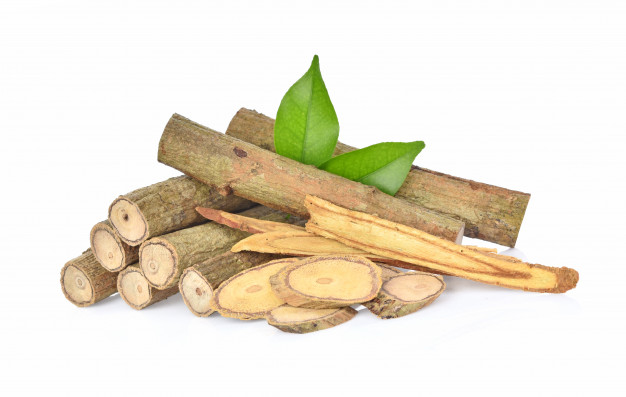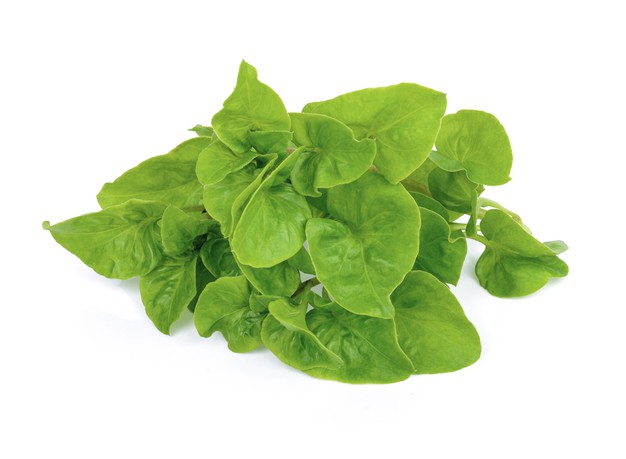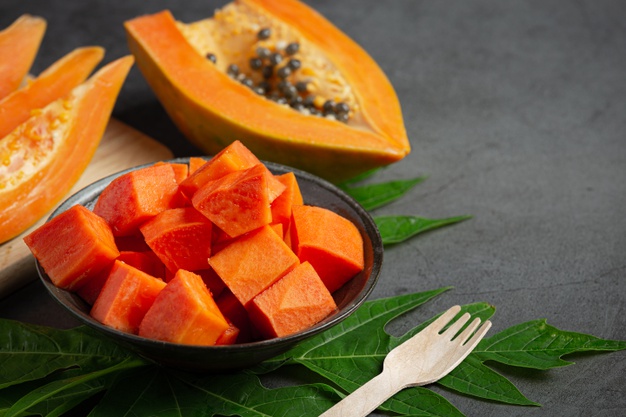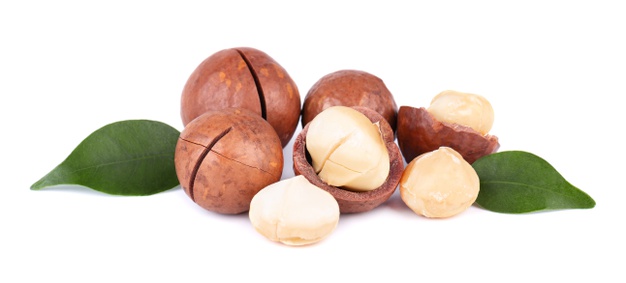Licorice root is an imperative herb, which has been extensively used for its significant medicinal benefits. It has seen that in ancient Egypt licorice root was widely used for preparing sweet drink for pharaohs and it has also used traditionally in Greek, Middle Eastern and Chinese medicine for treating inflammation, stomach upset and upper respiratory tract disorders.
Nutritional overview
- It contains fewer amounts of carbohydrates
- It does not contain enough proteins and fats
- It contains various important micronutrients like Vitamin E, Vitamin B complex, calcium, sodium, manganese, zinc, chromium and iodine
- It is packed with several imperative biologically active components such as glycyrrhizin, licochalcone-A, glabridin, glycyrrhizic acid and licocoumarone, which are responsible for exerting antioxidant, antimicrobial, anti-inflammatory, immunomodulatory and anti-carcinogenic property
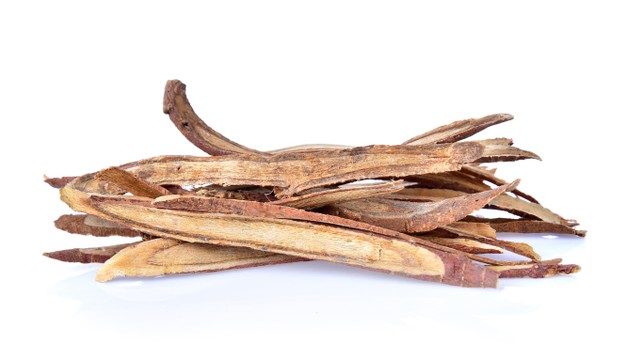
Biological properties
Antioxidant property
- Flavonoids components of licorice root have potent antioxidant activities that are associated with preventing oxidative damages of body
- It helps to decrease the concentration of free radicals as well as reactive oxygen species within body and protect the body from their harmful effects
Anti-inflammatory property
-
 It helps to prevent inflammation by reducing the level of inflammatory mediators within body
It helps to prevent inflammation by reducing the level of inflammatory mediators within body - It also helps to prevent swelling and pain
Antimicrobial property
- Glycyrrhizin component of licorice root has strong antimicrobial activity. It is associated with synthesizing antimicrobial peptide, which is responsible for eliminating pathogenic microorganism from body
- It also helps to treat various antibiotic resistant infections
Anti-carcinogenic property
- Glabridin, licochalcone-A and licocoumarone compounds found in licorice root play significant role in suppressing the growth of malignant cell
- Glycyrrhizin and glycyrrhizic acid of licorice root are associated with preventing the growth of tumor cells
- It is very effective for decreasing the prevalence of colon, skin, liver, breast and uterine cancer as well as leukemia
Health benefits
Role on gastrointestinal health
- Extract of licorice root has been traditionally used as an imperative remedial action for treating stomach ulcer as it helps to destroy the bacteria H. Pylori, which is considered as one of the most significant causative factor of stomach ulceration
- It has also seen that it plays significant role in stimulating the release of mucous that helps to protect the lining of stomach from the ravages of hydrochloric acid and pepsin, which also reduces the prevalence of stomach ulcer
- Glabrene and glabridin are the two important flavonoids present in licorice root help to prevent stomach discomforts as well
- Its extract is extremely beneficial for reducing the prevalence of nausea, stomach pain, diarrhoea and heart burn

Role on immunity
- It has strong immune stimulatory property hence its consumption is very much useful for improving overall immunity of the body
- It is closely associated with increasing the resistant power of body thus helps to decrease the risk of developing chronic diseases
Role on oral health
- It plays significant role in keeping the teeth as well as the gum healthy
- Antibacterial components found in licorice root are responsible for preventing the growth of those bacteria, which are accountable for tooth decaying
- It helps to decrease the susceptibility of developing cavities as well
- It also helps to protect the gum from inflammatory damages

Role on respiratory health
- Its consumption is very effective for preventing various respiratory issues like cough, bronchitis etc
- Glycyrrhizin extract obtained from licorice root is extremely helpful for relieving asthma
- It is also associated with relaxing bronchial spasm by getting rid of mucous from lungs
- It plays vital role in protecting the upper respiratory tract from bacterial infestation and infection

Role on skin
- It plays significant role in promoting skin health
- It is associated with protecting the skin from inflammatory damages
- Licorice extracts is very useful for preventing itchy skin as well as skin swelling
- Glycyrrhizin extract of licorice root shows strong antibacterial effect against Staphylococcus aureus and prevents various skin infection caused by the respective bacteria like cellulitis, impetigo and folliculitis
- It also helps to prevent eczema, acne and psoriasis
- It helps to protect the skin from the harmful effects of UV ray and also prevents sun burn
Role on preventing stress
- It is very effective for reducing the stress level as it helps to regulate the secretion of cortisol (stress hormone) within body
- It has seen that carbenoxolone component of licorice helps to inhibit those brain enzymes, which are responsible for producing stress hormones
- It is also associated with improving the symptoms of age related brain changes as well as verbal memory
Therapeutic usages
- Licorice root extract is very effective for reducing body mass index hence facilitates weight reduction
- Individuals who are on renal dialysis have experienced a feeling of dry mouth. It is better for them to use mouthwash containing licorice with every meal at least for ten days as it significantly improves the feeling of dry mouth
- It also helps to inhibit the spreading of hepatitis virus. Intravenous application of licorice to patients with Hepatitis B and Hepatitis C significantly improves their symptoms
- Individual suffer from hypercholesterolemia should consume licorice root extract as it helps to decrease the concentration of triglyceride, LDL and VLDL
- It also plays significant role in reducing the intensity and number of hot flashes in menopausal women
- Individual with non alcoholic fatty liver disease should consume licorice root extract as it helps to decrease the prevalence of liver injury

Contemporary uses of Licorice root
It has seen that recently people utilize licorice root for numerous purposes such as –
- It has been used as flavoring agent
- It is also used for treating acid reflux, viral or bacterial infections and sore throats
General consideration of using Licorice root
- It is better to prepare licorice root extract at home. It can be simply prepared by cutting the licorice root into small pieces and boil it for some minutes. Finally the water should be strained and can be consumed as licorice root extract
- Peeled licorice root is also available in markets as powdered and dried form as tablets and liquid extract
- It contains glycyrrhizin, which is responsible for developing various health hazards hence it is wise to avoid the long term use of licorice root for avoiding its side effects

Risk factors
- Excessive consumption of licorice root is accountable for increasing the amount of glycyrrhizin within body and elevated level of glycyrrhizin is very dangerous. It increases the level of stress hormone that interferes with fluid and electrolyte balance
- It is also responsible for reducing the potassium level hence may develop hypertension, abnormal cardiac rhythm, swelling, fatigue, muscle weakness and in severe condition it may lead to congestive heart failure
- It is better to consume licorice not more that 5 g per day. This amount is considered as safe for human consumption as it contributes 10mg of glycyrrhizin, which would not show any adverse effect on health
- It should also kept in mind that licorice should be consumed for short duration like for 4 to 6 weeks otherwise it may develop its hyperactive disorders. If anyone require licorice for long duration then it is better for them to use deglycyrrhizinated licorice, which has no glycyrrhizin

Source:
Hamad, G.M., Abd Elaziz, A.I., Hassan, S.A., Shalaby, M.A. and azim Mohdaly, A.A.A., 2020. Chemical Composition, Antioxidant, Antimicrobial and Anticancer Activities of Licorice (Glycyrrhiza glabra L.) Root and Its Application in Functional Yoghurt. Journal of Food and Nutrition Research, 8(12), pp.707-715.
Kao, T.C., Wu, C.H. and Yen, G.C., 2014. Bioactivity and potential health benefits of licorice. Journal of agricultural and food chemistry, 62(3), pp.542-553.
Kwon, Y.J., Son, D.H., Chung, T.H. and Lee, Y.J., 2020. A Review of the Pharmacological Efficacy and Safety of Licorice Root from Corroborative Clinical Trial Findings. Journal of Medicinal Food, 23(1), pp.12-20.
Messier, C., Epifano, F., Genovese, S. and Grenier, D., 2012. Licorice and its potential beneficial effects in common oro‐dental diseases. Oral diseases, 18(1), pp.32-39.
Raoufinejad, K., Rajabi, M. and Sarafian, G., 2020. Licorice in the Treatment of Acne Vulgaris and Postinflammatory Hyperpigmentation: A Review. Journal of Pharmaceutical Care, pp.186-195.
Wang, Z.F., Liu, J., Yang, Y.A. and Zhu, H.L., 2020. A Review: The Anti-inflammatory, Anticancer and Antibacterial Properties of Four Kinds of Licorice Flavonoids Isolated from Licorice. Current medicinal chemistry, 27(12), pp.1997-2011.
Xiaoying, W., Han, Z. and Yu, W., 2017. Glycyrrhiza glabra (Licorice): ethnobotany and health benefits. In Sustained Energy for Enhanced Human Functions and Activity (pp. 231-250). Academic Press.
